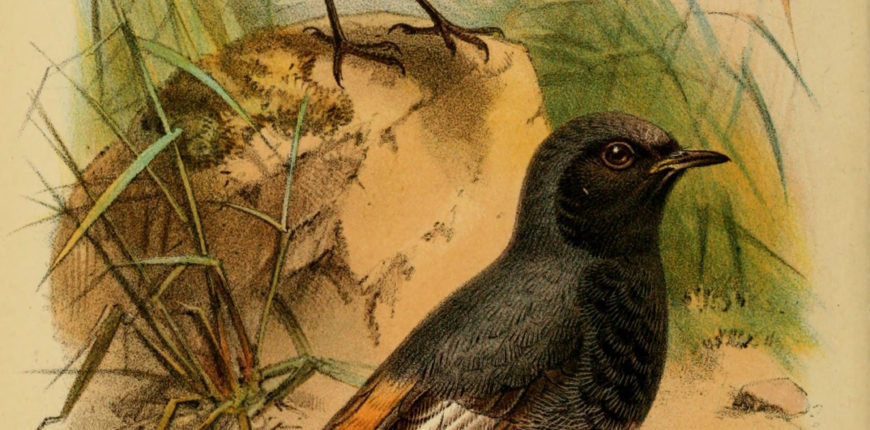An Invitation to Create #2 – Record a bird sighting

An invitation to create…
Birds fly in and out of the leaves of many of the books here in the DEI. It is perhaps unsurprising when we consider that our collection is situated in an area that has always boasted its own teeming wildlife. George Montagu’s Ornthological Dictionary of 1802, renowned for its contribution to the study of birds, was mostly written from his home in Knightsbridge, and includes his discovery of the “Cirl Bunting,” a bird, which, seemingly confined “to the west of England […] so long escaped the notice of British naturalists.” Andrew Tucker’s more focussed Ornithologia Danmoniensis, or, an History of the habits an economy of Devonshire birds (1809) also appears among the shelves, as does W. S. M. D’Urban’s The Birds of Devon (1892). Perhaps more unexpectedly, a “Catalogue of Birds” also features in the manuscripts of the collection, referring to the time in which the DEI itself functioned as a museum as well as a library, and may indeed have had a collection of taxidermy birds on display.
This 19th century interest in birds should also be considered in its wider Victorian context. At a time in which scientists were increasingly turning to the natural world to consider the mysteries of the human condition in greater depth, the study of birds motivated some of the greatest discoveries:
– In 1832, during his voyage on the HMS Beagle, Charles Darwin became transfixed by the diversity of finches on the Galapagos Islands. After presenting his findings to the Zoological Society of London (founded in 1826), the ornithologist and bird artist John Gould recognised the finches as a separate species, not just varieties. By uniting Gould’s powers of observation with his own knowledge and ideas, Darwin found another piece in the puzzle that supported his growing theory of Natural Selection.
-Later, when a fossilised archaeopteryx was uncovered in the rocks of Solnholfen, Bavaria, Darwin included the discovery in a revised edition of his Origin of Species. These small, winged dinosaurs were an important plot point in his developing theory of evolution (a cast of the archaeopteryx, which later inspired a poem by Thomas Hardy, remains in the collection of the Royal Albert Memorial Museum).
It is therefore unsurprising that the DEI, an institution established in 1813 for the advancement and discussion of education and knowledge, sought to align itself with these new emerging theories & invested in books about the birds of its locale- a canny move!
On a smaller scale, however, this interest in natural history, and particularly in species that were so small and enchanting, provided a focused form of documentation in a world that was opening up in unexpected ways. In our own time, the recent pandemic has encouraged us all to renew our connection with our immediate environments. Towards the beginning of lockdown, the emphasis on our daily form of outside exercise invited us to rediscover our green spaces, and sometimes to document those experiences in drawing, in writing, and in photography. As the winter months draw in, many of us may now be experiencing that connection with our wildlife in our own homes.
Our invitation to create this week is, then, is to record a bird sighting, at home or on a walk, and to capture that bird in paint, in pencil, or in writing. What do you notice about its pattern of flight, movement, colour, shape, call? Are you able to identify it? Where and when did you spot it? In focussing on this sighting, we record the world as it stands, but also reconnect with a tradition with long local links. We look forward to seeing what you create!
Plate 1, “Black Redstart,” W.S.M. D’Urban, The Birds of Devon, (Porter, 1892).

